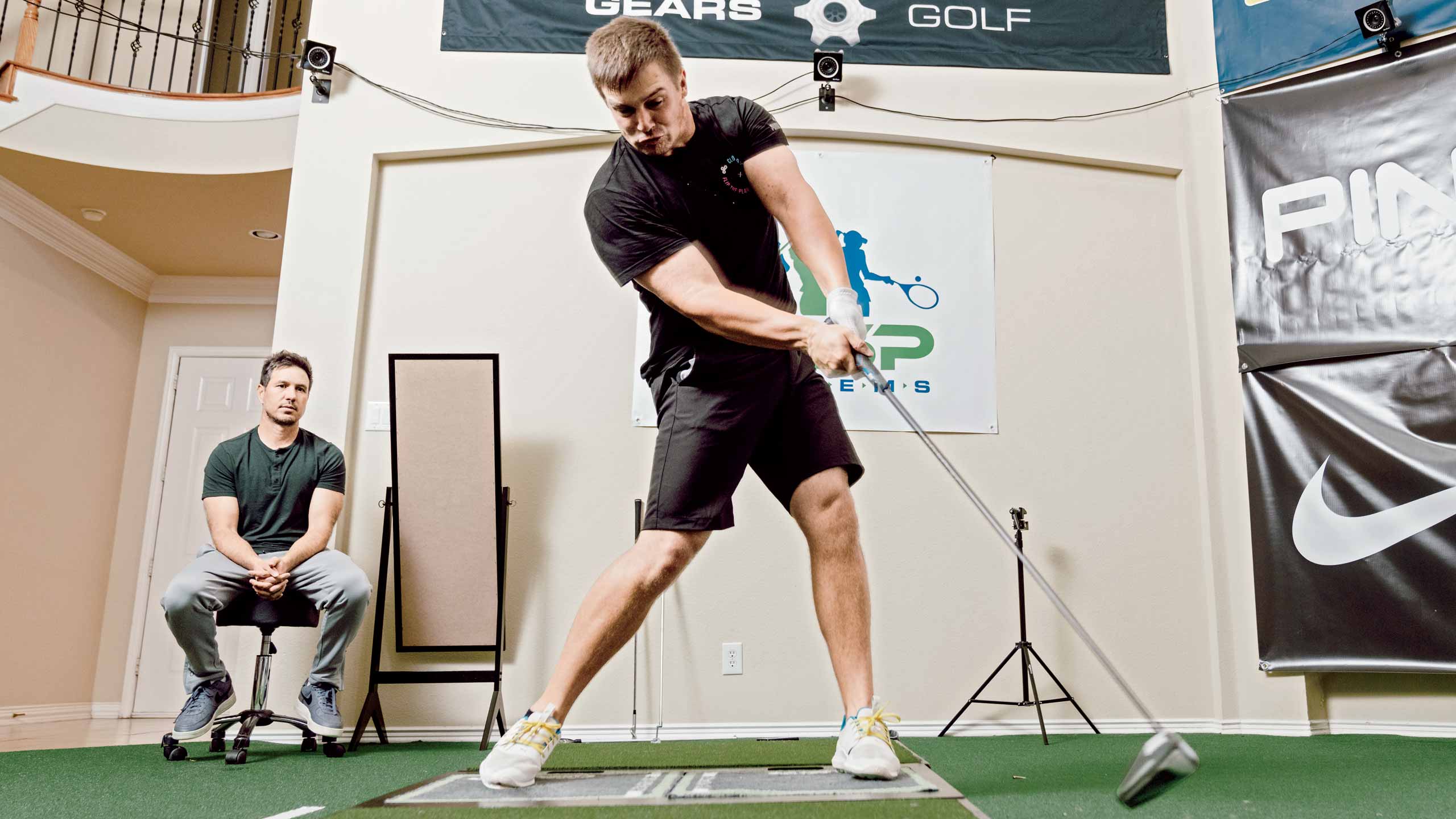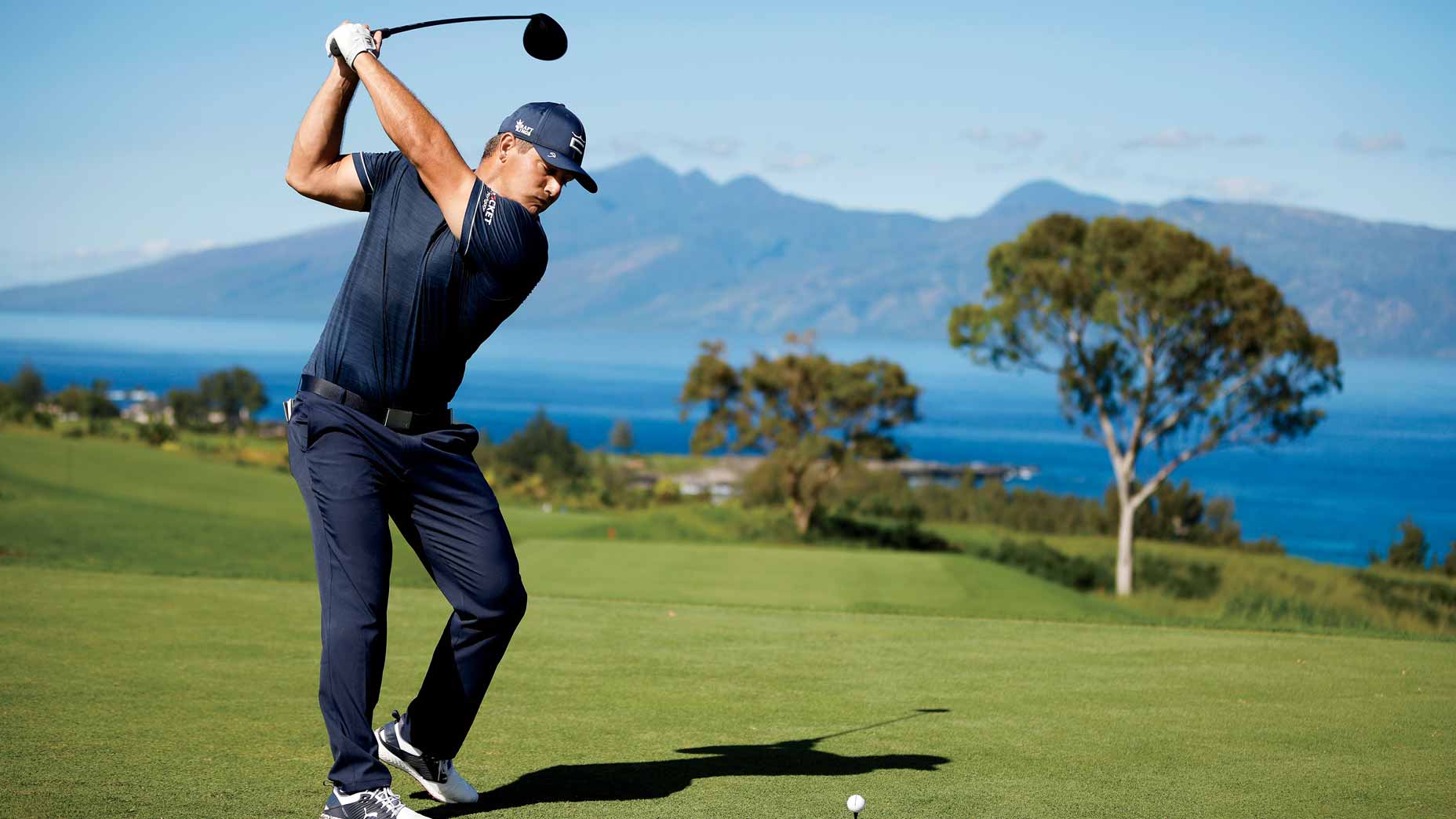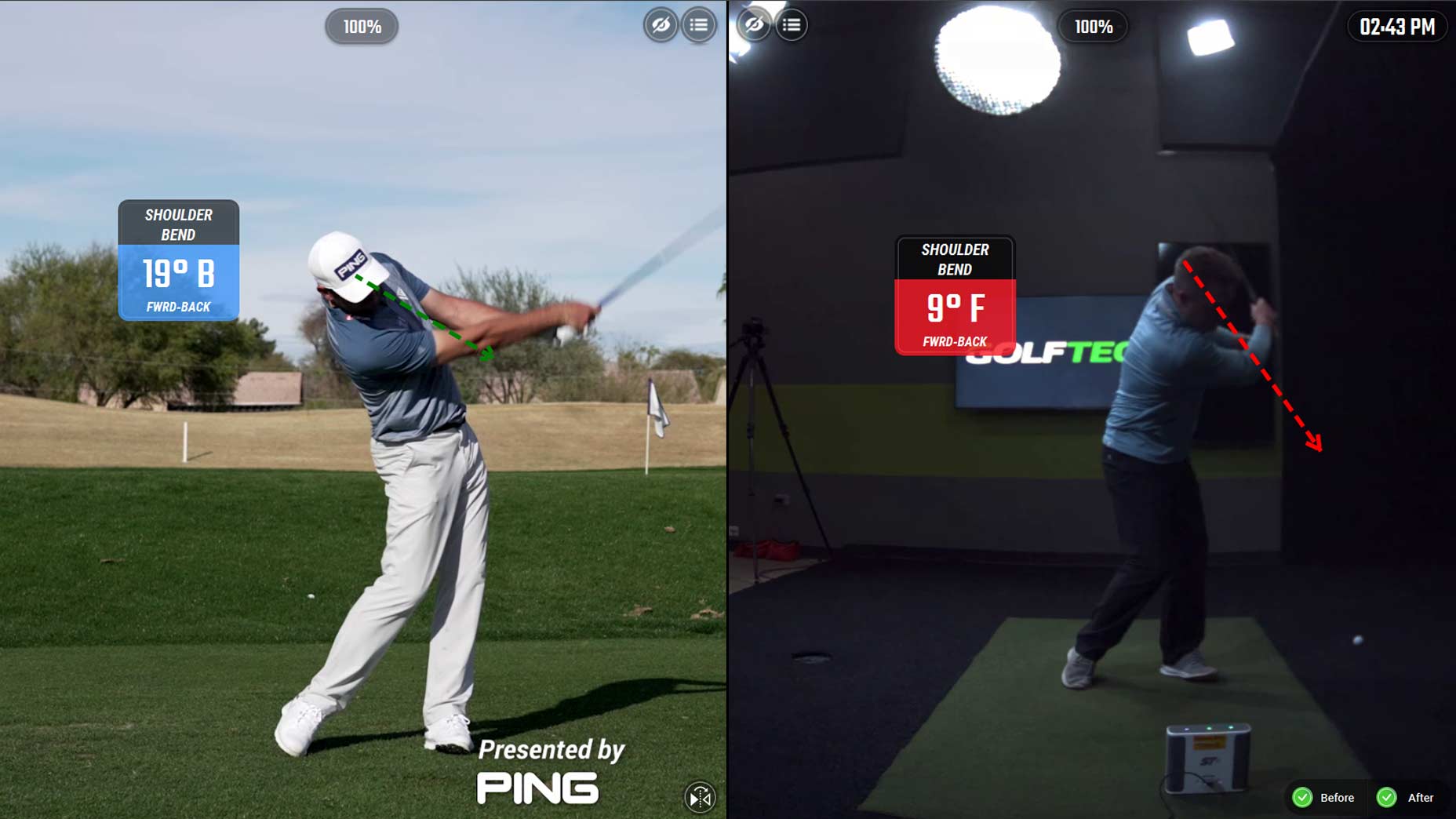The game’s always been about chasing yards, and the guy who’s gobbling up most of them these days has made the quest his own personal assault on smashing any and all speed barriers. Agree or disagree with Bryson DeChambeau’s lust for power, you can’t argue that it hasn’t worked.
Since transforming his mind, body and — yes, you can say his soul — from mild-mannered Tour player to the tee box behemoth you currently see on TV, DeChambeau has picked up three wins, a major trophy, a Ryder Cup, about $12.5 million in winnings and an impressive finish in the Long Drive Championship. Ask him, though, and he’ll humbly reply, “Anybody can do what I’ve done.”
Here, in his own words, is golf’s mightiest swinger on how you can take advantage of new technologies and training to add driving power you never thought possible.
I started off as a fader…
I went with a left-to-right shot shape in high school and college, because I wanted to be like Ben Hogan. I gripped it weak with my left hand, and I’d practice holding off the clubface. Hogan is one of my idols, and I wanted to be as good a ball striker as he was.
…Even though it was costing me distance
I could control my fade, but I felt like I wasn’t maximizing my potential. Then Jordan Spieth came on Tour and I watched him be so consistent with his kind of “chicken-wing” release. Jordan’s move was a big breakthrough for me. If I kept my left elbow pointing at the target, the clubface would never close.I could miss it 40 yards right, but I knew it wouldn’t ever go too far left. I could live with a one-way miss.
So I switched to a controlled draw
That started around 2017. Now, I like to live in a spot where my swing path is about 4 to 6 degrees to the right (what you’d call a “mild” inside-out delivery). My grip has gotten stronger over the years, mostly as a result of the speed-training sessions I’ve been through. The faster I swung, the more my hands gravitated to the right. A stronger grip has actually given me more speed. I feel like I’m wrapping my thumb more around the handle, as if I’m gripping a baseball bat. I’ve actually gained more stability at this speed with that kind of stronger grip.
Now, my main focus is spin control…
I’m always trying to find ways to reduce my spin, especially at the higher speeds I’m swinging at now. Some people think I reduce the lofts of my clubs to get more distance, but that’s not true. It’s to reduce spin. That’s why my driver loft is 5 degrees. One of the simplest and most effective ways of reducing excess spin — if that’s a problem for you — is to reduce loft.
…Oh, and to win in bunches
I’m in this game to compete and win at the highest level. I was obviously a good player before, but when I looked at the players who were competing and winning majors, they were all players who hit the ball a long way. That’s why driving distance is such an advantage: It doesn’t just get you closer to the green on your drive, it gives you the option of clubbing down and not being forced to “thread” a drive on every tee box.
Which takes a team effort
My coach, GOLF Top 100 Teacher Chris Como, has really helped me understand the biomechanics of the swing. Something we work on is using a “stretch-shortening” cycle for more power with my driver. At the top of my swing, I feel like I’m stretching my arms away from my head as much as I can. In transition, I feel like I’m pulling my arms close to my body as fast as possible. First a stretch of the muscles, then a hard contraction.
Everyone needs a consistent setup
I stand farther away from the ball than most golfers and keep my left arm pretty straight — with lots of ulnar deviation — from start to impact. That’s one of those principles from my first coach, Mike Schy, that has stuck with me over the years. It allows me to set a radius for my swing and gives me the freedom to “throw” the clubhead as hard as I can at the ball at impact. I don’t have to worry about creating space. I just try to release the club as fast as I can.
Grip the club like you mean it
My grip pressure has gotten more aggressive over time, because you’ve got to have more grip pressure if you’re swinging at 140 mph compared to 115 mph. Your fingers and the palm of your hand need to be super, supertight on the handle, but your wrists need to be supple. A lot of people don’t understand the difference between the two, but it’s essential.
Give yourself some options
I used to have two swings that I’d use with my driver: my standard swing and a “fairway finder,” in which I’d tee the ball lower and play it a little farther back in my stance. (If you struggle to find the short grass consistently off the tee, these adjustments will be a game changer for you.) I still have two driver swings, but now they’re my standard swing and my power swing, which I use on wide-open par 5s or reachable par 4s — like the 6th at Bay Hill.

Breathe for speed…
When I’m trying to swing for extra speed, I take shorter, quicker breaths with a forceful exhale. It’s not for show — I’m trying to rev up my entire nervous system by increasing my heart rate and get some extra adrenaline pumping into my system.
…Because speed is king
I’m proud to be a part owner in the Professional Long Drive Association. These guys are incredible athletes who deserve more respect and more exposure to showcase their skill. Go to any local driving range and everybody wants to hit the ball far. It’s fun to hit the ball far. It’s good for the sport, and it gets more people involved and excited about the game of golf.
A lot of long-drive guys don’t bother practicing with their irons or wedges ever. They literally only pick up their driver and start by swinging it superfast until they warm up to their max speeds. I obviously need to calibrate differently. I allocate certain amounts of time to putting, chipping, iron play and controlling my driver. People who follow me on social media may not recognize that because they like hearing me talking about the driver.
Do your gear research
I don’t understand why golfers would let their ego get in the way of their equipment decisions. All it’s doing is costing you distance. Who cares if your driver is 12 degrees? Or if the shaft says stiff or regular? Dial in the specs that are best for you, which you can only find by getting a proper clubfitting.
I go down lots of rabbit holes with my equipment. Sometimes it doesn’t work and I’m at a dead end. I’ll try to implement something and it makes me slower immediately, so we go research and look at other possible options. There’s no shame in trying something and it not working. It just means it’s time to do more research and pivot toward something else.
I owe a lot of my new power to new driver tech…
Cobra is doing some really special things with its technology. They’ve figured out how to push the driver’s center of gravity back (always a plus) while making the overall clubhead lighter and keeping the face superfast. And they did it without sacrificing MOI. That means golfers can swing it faster and launch it higher without sacrificing consistency on off-center hits.
…And a lot to my accuracy too
What’s cool is that driver technology is starting to catch up to the higher speeds professional golfers are producing. The challenge is on mishits. I’ve seen long-drive guys hit the ball literally five millimeters too high on the face and the ball just goes — bam! — straight into the ground with no spin. But we’ve started figuring that out. I’m telling you, this new Cobra driver, the LTDx, is insane.
I set goals. Do you?
My ultimate dream with my driver is to be over 200 mph ball speed with a 46-inch driver literally every single time I tee it up. I’ve settled into a driver head weight of about 190 grams. I will always continue to work on my speed the same way I will work on putting, wedging and everything else because this is my life and career.
Anyone can add power
Every golfer can swing their driver faster than they think they can. What’s stopping them is their brain, which forces them to slow down when it thinks you’re being unsafe. It’s why speed training isn’t simply about gaining strength. It’s about breaking through those neurological barriers and teaching your body that it’s okay to swing at higher speeds.
And it’ll pay huge dividends for you
I’ve always said the biggest advantage you gain when you start hitting the ball farther isn’t found off the tee. It’s with your irons. When you’re hitting an 8-iron and your buddy has to pull a 5 from the same spot, that’s going to wear on your opponents. And, as you know, anytime you can approach a green with a short iron instead of a mid- or long iron, you have the advantage.

Plus, you don’t want to get left behind
Golf is an athletic sport, and the next generation of golfers are going to be bigger, stronger and faster than the ones before. We’re going to see a lot more golfers built like my friend and Long Drive pro Martin Borgmeier. It’s only a matter of time before someone who is 6 foot 8 comes on Tour with easy 200- plus mph ball speed, putting the rest of us at a disadvantage. I’m trying to make sure I’m ready for that day.
Some advice for junior players
Start speed training as early as you can. A kid who is 15, 16 or 17 is going to understand how to produce speed much easier than an older golfer, because you’re able to learn quicker at those ages. A couple of times each week, spend an hour swinging as hard as you can. It doesn’t matter where the ball goes. I think that’s the most empowering thing you can do as a junior golfer.
You can trick yourself into going low
From a young age I was playing from the red tees, trying to shoot 58 and 59. I went through one stretch where I did that pretty much every day for three, four weeks straight. I shot 59 from the reds when I was about 15, and I shot 58 once too. It taught me how to score with my wedges and strategize my way around the course so I could leave my ball in places where I’m comfortable.
Practice is still priority No. 1
A lot of people can shoot low scores. The difference is repeatability. Can you shoot a low score in your worst emotional state? For me, it comes down to making the practice range the same as the course. When I’m practicing with my driver, it’s not just about distances. It’s about fairway width, trouble width and distance control.
I’m literally trying to hit the same exact shot every single time. I’m trying to master one shot, one swing. And that is the goal for me. If I can get to where I’m mastering one shot, then there’s no reason for me not to be able to do it on the course.










